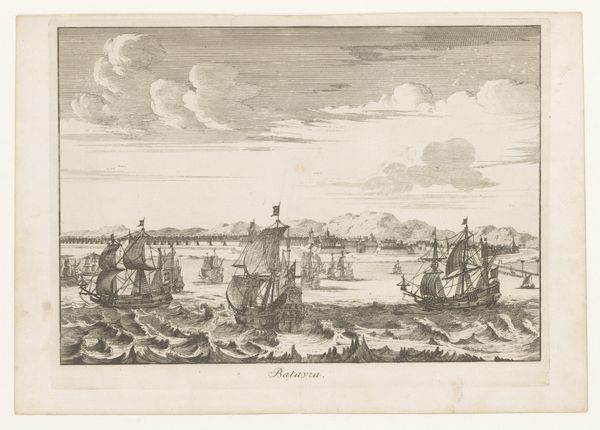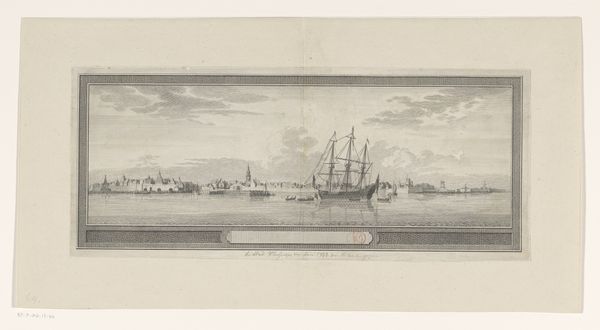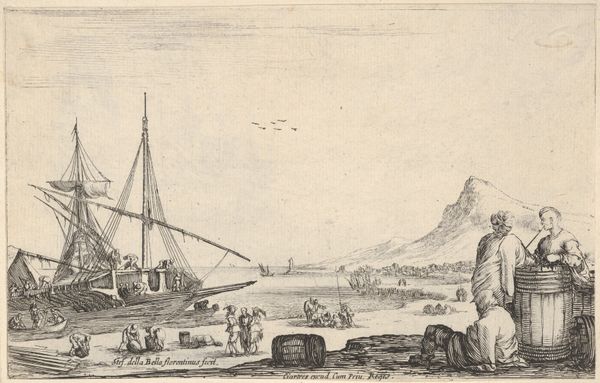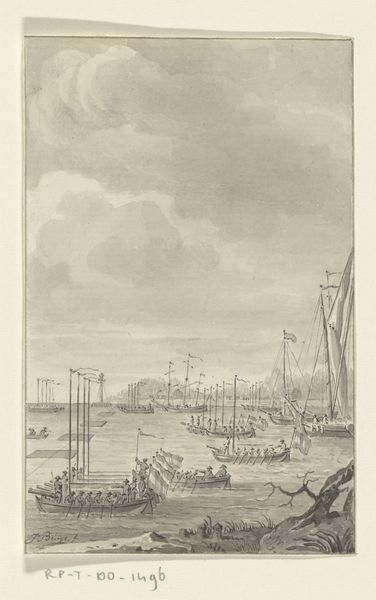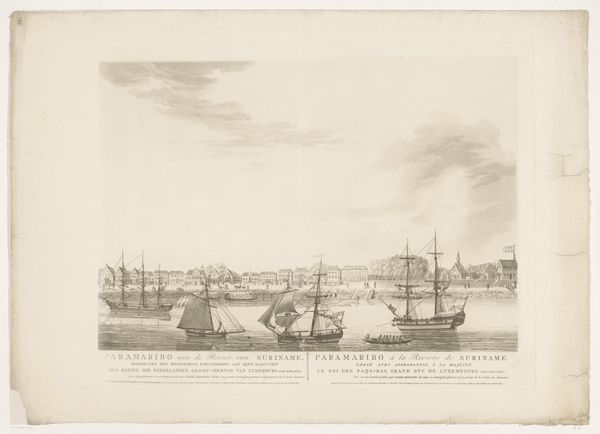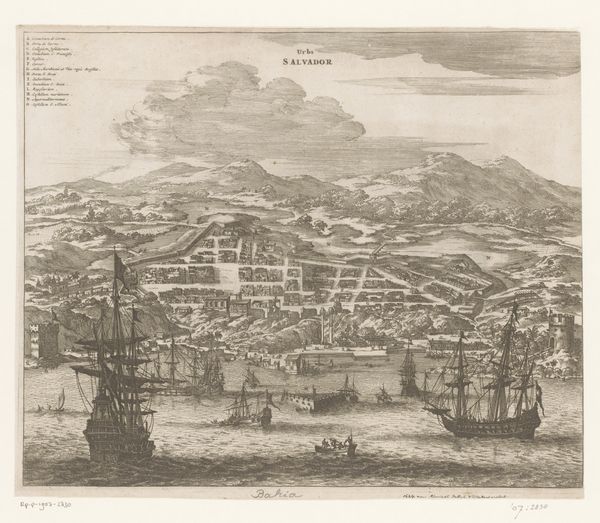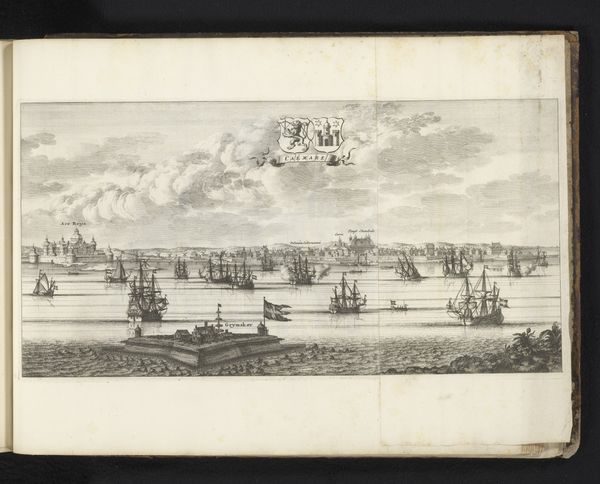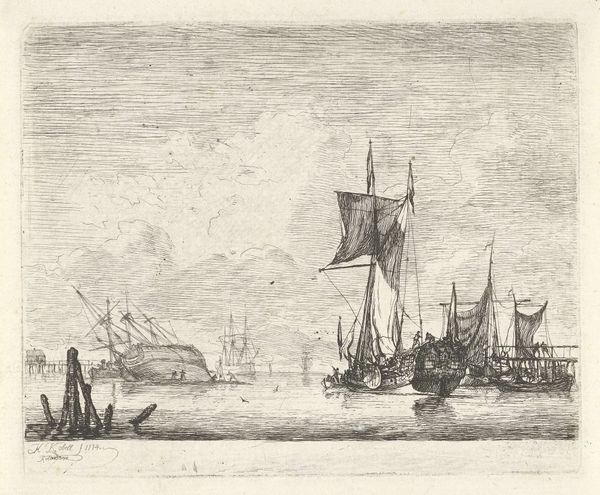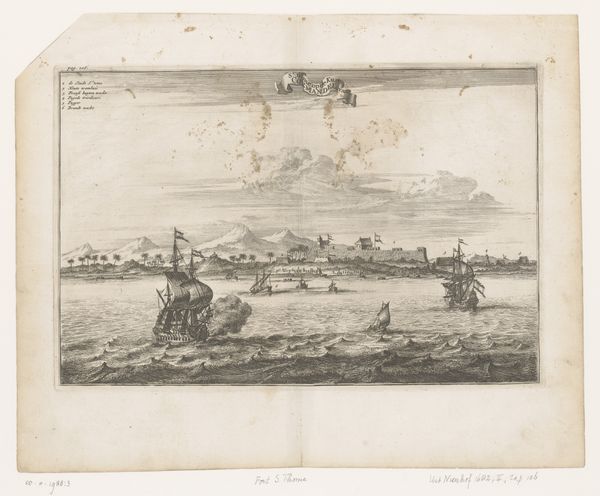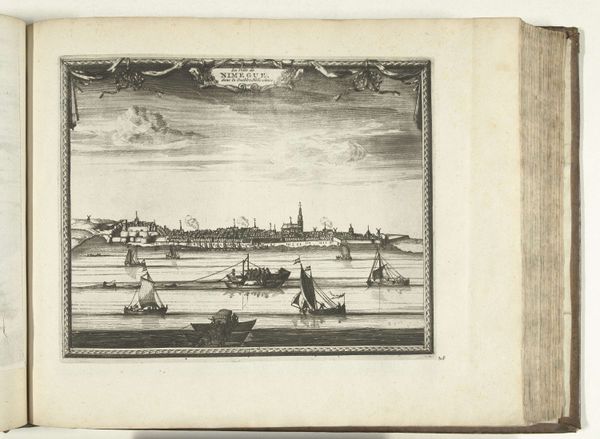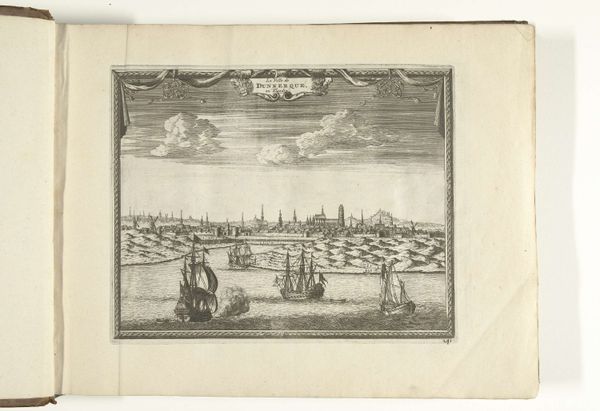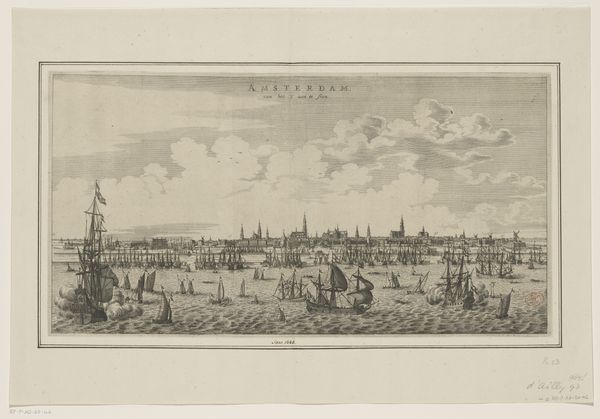
print, engraving
#
aged paper
#
light pencil work
#
dutch-golden-age
# print
#
pencil sketch
#
asian-art
#
old engraving style
#
sketch book
#
landscape
#
personal sketchbook
#
pen-ink sketch
#
sketchbook drawing
#
cityscape
#
pencil work
#
sketchbook art
#
engraving
Dimensions: height 178 mm, width 362 mm
Copyright: Rijks Museum: Open Domain
Editor: This engraving, "Gezicht op Batavia," made in 1714 by an anonymous artist, depicts a Dutch settlement in Asia. What strikes me most is the stark contrast between the meticulously detailed ships and the haziness of the land. What do you see in this piece? Curator: I see a carefully constructed image laden with the symbols of Dutch power and global ambition. The ships themselves, rendered with precision, are potent signifiers of trade and colonial reach, cutting across the water, a liminal space connecting cultures. Note how the buildings along the shoreline are less distinct. Editor: It's almost as if the ships are the main characters, and Batavia is just a backdrop. Curator: Perhaps it is a testament to the priority of the Dutch East India Company – a visual shorthand highlighting the primacy of maritime power. Do you notice the relative sizes of the ships and the buildings? How does that play into the visual rhetoric of dominance? Consider how the sketch plays into an understanding and vision of "the orient" in the European mind. Editor: That's interesting. So, the scale isn't just about accurate representation, but about communicating a certain power dynamic? Curator: Precisely. Each element, from the billowing sails to the faint outline of the distant mountains, contributes to a narrative. Editor: I see it now. It's a subtle, yet powerful way of showcasing the Netherlands' global influence. I’ll never look at historical landscapes the same way! Curator: Indeed. Symbols, strategically placed, shape our understanding of the past, embedding colonial ideology within the landscape itself.
Comments
No comments
Be the first to comment and join the conversation on the ultimate creative platform.
